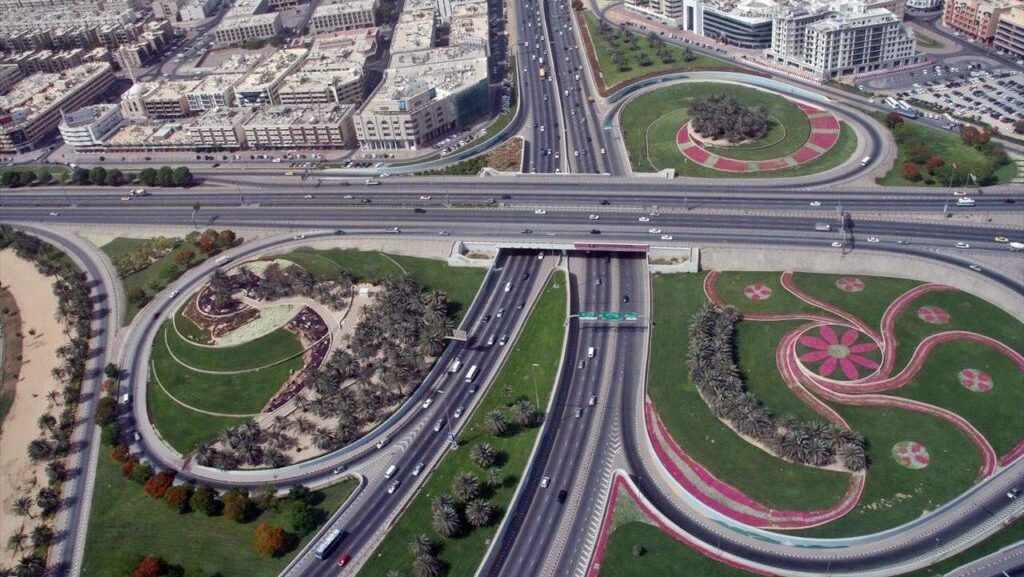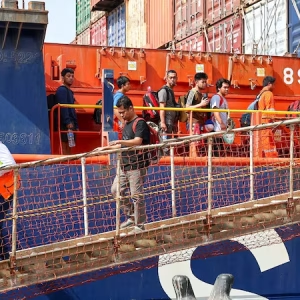When most people think of major highways in the UAE, Sheikh Zayed Road (E11) or Sheikh Mohammed Bin Zayed Road (E311) usually come to mind. But there’s another key route quietly transforming the way we travel between emirates — Emirates Road (E611).
This vital highway, also known as E611, runs almost parallel to E311 and E11, providing a faster, less congested alternative for commuters and heavy vehicles alike. While it may not pass through the center of cities, it plays a crucial behind-the-scenes role in easing traffic and making inter-emirate travel smoother and quicker.
Why E611 Matters More Than Ever
With the UAE’s population growing and cities expanding, traffic congestion has become a daily headache for many drivers. The government has made huge investments in infrastructure to fix this problem, and E611 is one of the most important pieces of the puzzle.

Spanning from the outskirts of Abu Dhabi in the west to the northern emirates like Sharjah, Ajman, Umm Al Quwain, and Ras Al Khaimah, Emirates Road acts as a key link between the major population hubs. It avoids the busiest urban centers, which means fewer stoplights, fewer delays, and a much smoother driving experience.
For daily commuters, especially those traveling between Sharjah and Dubai or Ajman and Abu Dhabi, E611 is a game-changer. It helps reduce travel time significantly, especially during peak hours when other main roads like E311 are often jammed.
A Lifeline for Logistics and Transport

It’s not just regular drivers who benefit. For logistics companies and truck drivers, E611 is a preferred route for transporting goods across the country. Unlike E11, which cuts through the heart of Dubai, or E311, which sees massive commuter traffic, E611 is designed to handle heavy-duty vehicles with less disruption.
Many industrial zones, warehouses, and logistics hubs are located near E611 for this very reason. The route supports the flow of cargo from Jebel Ali Port to the rest of the UAE and beyond, playing a vital role in keeping the nation’s economy running smoothly.
How E611 Complements Other Major Roads
To really understand why E611 is so important, it helps to look at how it works alongside E311 and E11.
- E11 (Sheikh Zayed Road) is the oldest and most central highway. It passes through downtown areas like Dubai Marina, Jumeirah, and Downtown Dubai. It’s scenic but often very busy, especially during office hours.
- E311 (Sheikh Mohammed Bin Zayed Road) is more recent and was designed to relieve pressure from E11. It runs through suburban areas and is a popular choice for daily commuters.
- E611 (Emirates Road) is the outermost of the three and was built to reduce strain on both E311 and E11. It’s especially useful for long-distance travel between emirates without having to cut through city centers.
In short, each road serves a different purpose, but together, they form a powerful highway network that keeps the UAE moving.
Recent Developments and Future Plans
The UAE government is continuously upgrading E611 to handle more traffic and improve safety. Recent expansions have widened the road to six lanes in each direction in some sections, making it one of the broadest highways in the country.

New interchanges and exits have also been added to connect E611 with key residential and industrial areas. This includes better access to communities like Dubai South, Al Barari, and Silicon Oasis. Plans are also underway to connect the highway more efficiently with the upcoming Etihad Rail network.
These improvements not only make E611 more convenient but also increase property values in nearby areas, boosting real estate development and making it a hot spot for investment.
Commuter Reactions: What Drivers Are Saying
For many drivers, the difference E611 makes is obvious.
“I used to spend over 90 minutes getting from Sharjah to Jebel Ali. Now, using E611, I get there in less than an hour,” says Ahmed, a sales executive who drives daily across emirates.
“I love how peaceful the road is. It’s wide, well-lit, and you don’t have to deal with aggressive stop-and-go traffic,” adds Sara, a Dubai resident who travels to Ajman regularly to visit family.
These testimonials highlight the real-world impact of a road that often goes unnoticed on the map but plays a big part in people’s daily lives.
Safety Measures and Smart Tech
To ensure smooth and safe driving, E611 has been equipped with smart systems such as speed cameras, electronic signage, and sensors that help monitor traffic conditions in real-time.
The Road and Transport Authority (RTA) has also rolled out more patrols and emergency response units along the highway to assist in case of breakdowns or accidents. These efforts have helped reduce incidents and improved the overall safety of the road.
Environmental and Urban Planning Benefits
Another major advantage of E611 is that it helps reduce pollution and traffic noise in densely populated areas. By redirecting long-haul traffic and trucks away from city centers, the highway lowers carbon emissions in urban neighborhoods.
Urban planners also appreciate the highway’s role in spreading out population growth. With easier access to outer districts and upcoming smart cities, E611 supports the UAE’s vision for balanced and sustainable urban expansion.
Final Thoughts: More Than Just a Road
Emirates Road (E611) may not be as well-known as Sheikh Zayed Road or as central as E311, but its impact is just as significant—if not more. As cities grow and the need for better inter-emirate travel increases, E611 continues to prove its worth as one of the UAE’s most valuable transport assets.
Whether you’re a commuter trying to save time, a business moving goods across the country, or just someone looking for a smoother ride, E611 is a route worth knowing.
Also read: This One UAE Highway Connects Millions – Here’s Why It’s So Special













